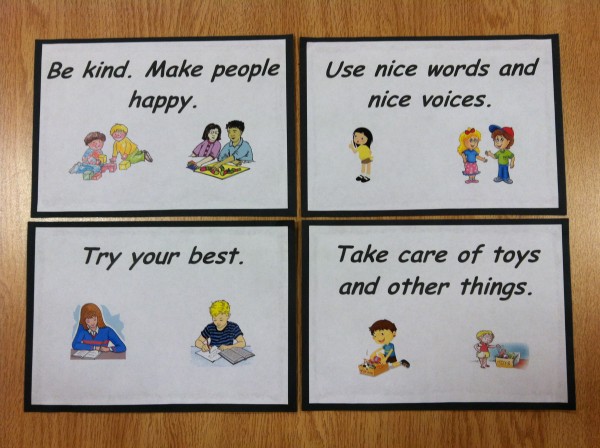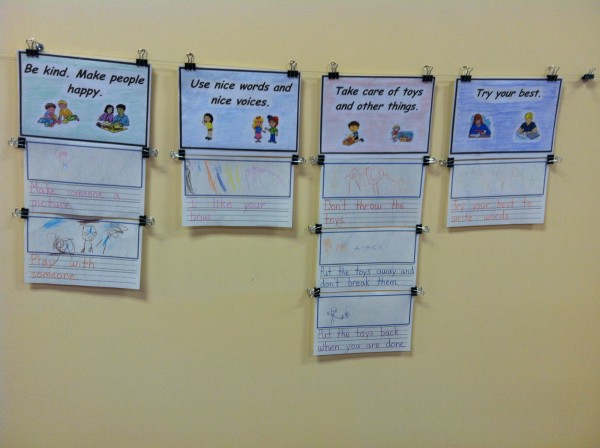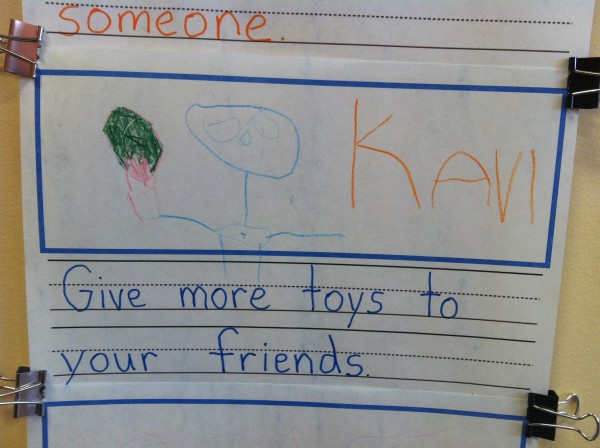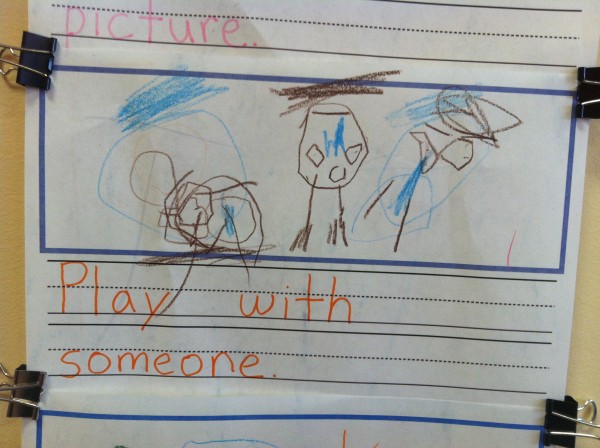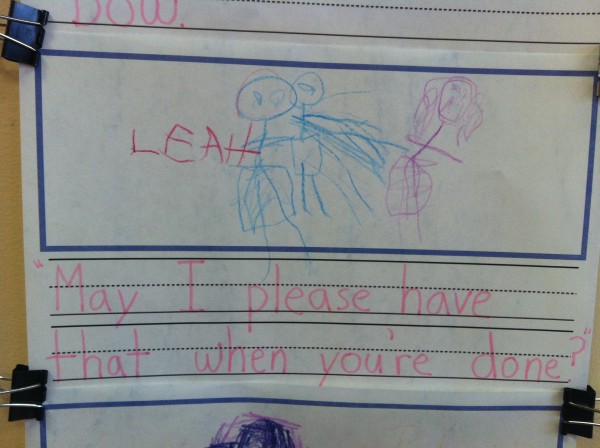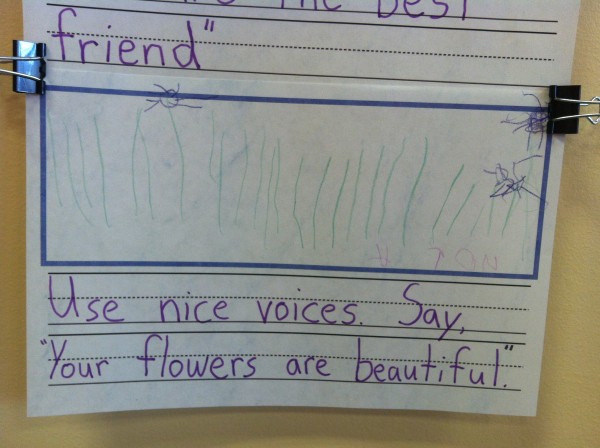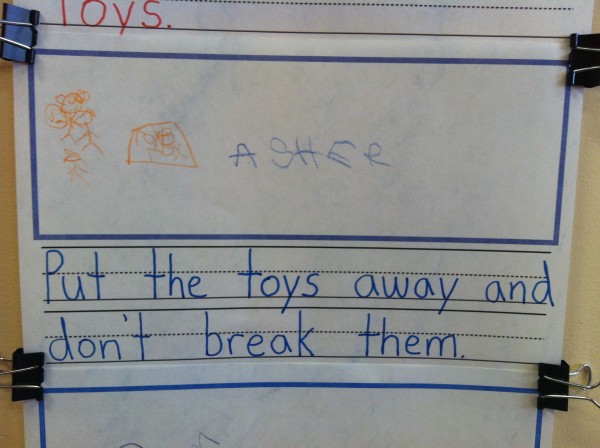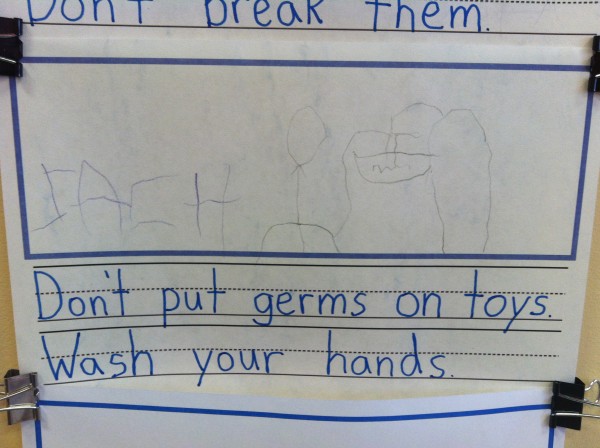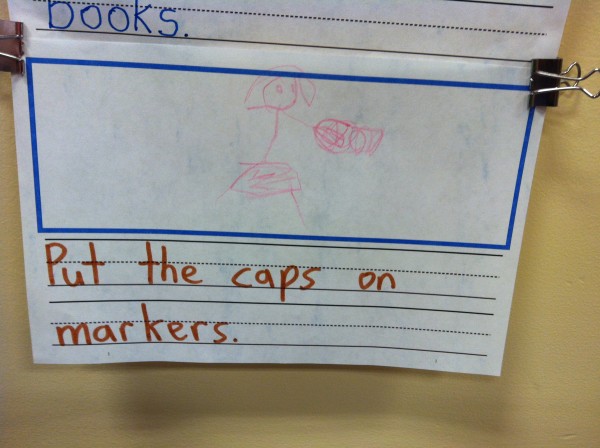Every school year, I spend quite a bit of time in the first few weeks establishing a set of classroom guidelines. Although the discussions we have about how best to act are not the most engaging, the time we spend up front pays off big in the long run. Activities run more smoothly, the classroom is a happier place to be, and the time we gain allows us to accomplish many more things.
The National Education Association offers a helpful list of resources that explains the research base for such practice, as well as some specific techniques. There are many effective ways to establish classroom expectations. It’s hard to identify the most essential characteristics, but one seems to stand out: giving students a say in what their classroom should be like. When students help create their classroom rules and structure, they are more likely to remember them, and they are more likely to buy into them.
However, doing this with young students presents challenges. For one, when I ask my students to tell me some rules for school, I am usually flooded with ‘don’t’ statements, such as: don’t hit; don’t kick; don’t eat the crayons. Those are good rules, and there’s a place for them in our expectations, but I want positive behaviors to be more principally featured, and it’s rare that students come up with those on their own.
Another challenge is creating something visual. Very few young students can read, of course, so having a bunch of written rules to look at wouldn’t be very meaningful. I want our classroom expectations to be prominently displayed, giving children steady reminders of how best to behave, but it’s difficult to represent many of our expectations with pictures. Try drawing or finding a picture of someone saying “Can I please have that?” in a nice voice. It’s not easy.
So this year, well aware of those challenges and not expecting to overcome them entirely, I am trying a new approach. I presented my students with four broad expectations. I expect that just about every issue that comes up at school will fall under one or more of these broad expectations. They are:
- Be kind. Make people happy.
- Use nice words and nice voices.
- Take care of toys and other things.
- Try your best.
I included some clip art that at least alludes to each expectation, and I hung the expectations in a big open space right behind where I sit during our group activities.
We went over my four guidelines as a group and the kids gave me specific examples of each. With that context provided, they were able to come up with many examples of positive behavior.
Later, during center time, I asked students to tell me specific guidelines, or “good things to do at school,” as I phrased it. Above my writing, they drew pictures of children abiding by those guidelines. Then I began hanging their ideas below my four broad expectations.
Having the students draw the pictures gives them a more active role in creating the guidelines. And though the drawings may be vague for most of us, the students who drew them can tell you what’s happening.
Throughout the school year, I will teach many of what I call social lessons. We’ll talk about different social situations and we’ll come up with ideas for how best to handle them. Some lessons will be on areas I’d like to see the class improve; some will address recurring conflicts; and some will deal with issues that frankly just bother me. With this new system, we can add new guidelines whenever we like. We have one new guideline so far:
By the end of the year, there will be many more. I’m excited to see how my students respond.
